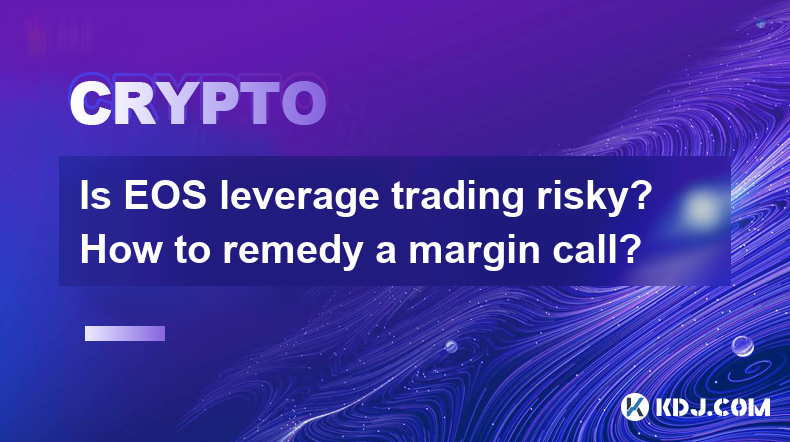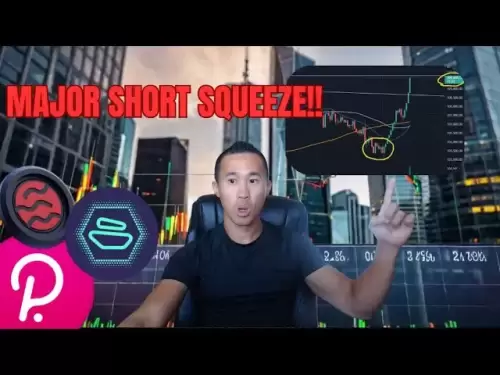-
 Bitcoin
Bitcoin $108,270.9768
2.07% -
 Ethereum
Ethereum $2,489.8066
2.50% -
 Tether USDt
Tether USDt $1.0004
0.01% -
 XRP
XRP $2.2035
0.66% -
 BNB
BNB $661.6608
2.32% -
 Solana
Solana $150.6425
2.13% -
 USDC
USDC $0.9999
-0.01% -
 TRON
TRON $0.2810
0.90% -
 Dogecoin
Dogecoin $0.1645
3.05% -
 Cardano
Cardano $0.5743
4.91% -
 Hyperliquid
Hyperliquid $38.8419
-0.15% -
 Bitcoin Cash
Bitcoin Cash $504.3134
-2.64% -
 Sui
Sui $2.8096
4.35% -
 Chainlink
Chainlink $13.3095
2.21% -
 UNUS SED LEO
UNUS SED LEO $8.9469
0.33% -
 Avalanche
Avalanche $17.9231
3.93% -
 Stellar
Stellar $0.2340
0.74% -
 Toncoin
Toncoin $2.8458
3.21% -
 Shiba Inu
Shiba Inu $0.0...01158
3.47% -
 Litecoin
Litecoin $86.0738
1.94% -
 Hedera
Hedera $0.1507
2.99% -
 Monero
Monero $319.8544
2.31% -
 Polkadot
Polkadot $3.4081
1.95% -
 Dai
Dai $1.0000
0.01% -
 Bitget Token
Bitget Token $4.5645
0.91% -
 Ethena USDe
Ethena USDe $1.0002
0.00% -
 Uniswap
Uniswap $7.2959
5.27% -
 Aave
Aave $272.4623
2.90% -
 Pepe
Pepe $0.0...09680
2.96% -
 Pi
Pi $0.4955
0.78%
Is EOS leverage trading risky? How to remedy a margin call?
EOS leverage trading can be risky due to potential significant losses; to remedy a margin call, deposit more funds or reduce your position size.
May 02, 2025 at 12:49 pm

Is EOS leverage trading risky? How to remedy a margin call?
Leverage trading in the cryptocurrency market, including trading EOS, can be highly lucrative but comes with significant risks. Understanding the risks involved and knowing how to handle margin calls effectively is crucial for any trader engaging in this practice. This article delves into the risks of EOS leverage trading and provides a detailed guide on how to remedy a margin call.
Understanding Leverage Trading with EOS
Leverage trading allows traders to borrow funds to increase their trading position beyond what they could afford with their own capital. When trading EOS with leverage, traders can amplify their potential profits. However, this also means that losses can be magnified if the market moves against them.
EOS, a blockchain platform designed to support industrial-scale decentralized applications, can be traded with leverage on various exchanges. The use of leverage in trading EOS can be appealing due to its volatility, which can lead to significant price movements in a short period.
Risks Associated with EOS Leverage Trading
The primary risk of leverage trading EOS is the potential for significant financial loss. When you trade with leverage, you are essentially borrowing money from the exchange to open a larger position. If the market moves against your position, you could lose more than your initial investment.
Another risk is the possibility of a margin call. A margin call occurs when the value of your position falls below a certain threshold, requiring you to deposit more funds or close part of your position to maintain the required margin level. Failure to meet a margin call can result in the automatic liquidation of your position by the exchange.
Market volatility is another factor that increases the risk of leverage trading EOS. Cryptocurrency markets can be highly unpredictable, and sudden price swings can lead to rapid losses when trading with leverage.
How to Remedy a Margin Call
Dealing with a margin call effectively can help you minimize losses and potentially keep your trading position open. Here are detailed steps on how to remedy a margin call when trading EOS with leverage:
Monitor your positions closely: Keep a close eye on your trading positions and the market conditions. Use trading platforms that offer real-time data and alerts to stay informed about your margin levels.
Understand your exchange's margin call policy: Different exchanges have different policies regarding margin calls. Familiarize yourself with the specific requirements and timelines to respond to a margin call on the platform you are using.
Deposit additional funds: If you receive a margin call, the quickest way to remedy it is to deposit additional funds into your trading account. This will increase your margin level and help you avoid liquidation.
- Log into your trading account.
- Navigate to the deposit section.
- Select your preferred payment method.
- Enter the amount you wish to deposit.
- Confirm the transaction and wait for the funds to be credited to your account.
Reduce your position size: Another way to remedy a margin call is to reduce the size of your trading position. This can be done by closing part of your position to increase your margin level.
- Log into your trading account.
- Go to the open positions section.
- Select the EOS position that received the margin call.
- Choose to close a portion of the position.
- Confirm the transaction and monitor your margin level.
Set stop-loss orders: Implementing stop-loss orders can help you limit potential losses and avoid margin calls. A stop-loss order automatically closes your position if the market reaches a certain price level.
- Log into your trading account.
- Navigate to the order section.
- Select your EOS position.
- Choose to set a stop-loss order.
- Enter the price at which you want the stop-loss to trigger.
- Confirm the order and monitor its status.
Strategies to Minimize Risks in EOS Leverage Trading
While leverage trading EOS can be risky, there are strategies you can employ to minimize these risks and protect your investments.
Use lower leverage ratios: Trading with lower leverage can reduce the risk of significant losses. Instead of using the maximum leverage offered by the exchange, consider using a more conservative ratio that aligns with your risk tolerance.
Diversify your portfolio: Do not put all your capital into a single leveraged position. Diversifying your investments across different assets can help mitigate the impact of a potential loss in one position.
Stay informed about market trends: Keeping up-to-date with market news and trends can help you make more informed trading decisions. Use reliable sources of information and consider using technical analysis tools to predict potential price movements.
Practice with a demo account: Before engaging in live leverage trading, practice with a demo account to familiarize yourself with the platform and the mechanics of leverage trading. This can help you develop a trading strategy without risking real money.
Tools and Resources for EOS Leverage Trading
To enhance your leverage trading experience and manage risks effectively, consider using the following tools and resources:
Trading platforms: Choose a reputable trading platform that offers robust features for leverage trading, such as real-time data, margin calculators, and risk management tools. Examples include Binance, Kraken, and Bitfinex.
Margin calculators: Use margin calculators to understand the potential impact of leverage on your trading positions. These tools can help you calculate the required margin, potential profits, and potential losses.
Risk management tools: Many trading platforms offer risk management tools, such as stop-loss orders and take-profit orders, to help you manage your positions and limit potential losses.
Educational resources: Take advantage of educational resources, such as online courses, webinars, and trading guides, to improve your understanding of leverage trading and risk management strategies.
Frequently Asked Questions
Q: Can I trade EOS with leverage on all cryptocurrency exchanges?
A: No, not all cryptocurrency exchanges offer leverage trading for EOS. It is important to check the specific offerings of each exchange before you start trading. Some popular exchanges that support EOS leverage trading include Binance, Kraken, and Bitfinex.
Q: What happens if I fail to meet a margin call?
A: If you fail to meet a margin call, the exchange may automatically liquidate part or all of your position to cover the losses. This can result in significant financial losses, so it is crucial to monitor your positions and respond to margin calls promptly.
Q: How can I calculate the required margin for my EOS leverage trading position?
A: You can use a margin calculator provided by the trading platform or an online tool to calculate the required margin for your EOS leverage trading position. The calculation typically involves the position size, leverage ratio, and the current market price of EOS.
Q: Is it possible to recover from a margin call without depositing additional funds?
A: Yes, it is possible to recover from a margin call without depositing additional funds by reducing the size of your position. By closing part of your position, you can increase your margin level and avoid liquidation. However, this may result in a loss on the closed portion of your position.
Disclaimer:info@kdj.com
The information provided is not trading advice. kdj.com does not assume any responsibility for any investments made based on the information provided in this article. Cryptocurrencies are highly volatile and it is highly recommended that you invest with caution after thorough research!
If you believe that the content used on this website infringes your copyright, please contact us immediately (info@kdj.com) and we will delete it promptly.
- Bitcoin Soars to $109,000: What's Fueling the Crypto Rally?
- 2025-07-03 10:30:13
- Chainlink's Chart Patterns Hint at a Big Move: Decoding the LINK Price
- 2025-07-03 10:50:12
- Shiba Inu, Solana Uptrend, Bitcoin Breakout: Decoding the Crypto Buzz
- 2025-07-03 10:50:12
- XRP Price Targets $2.40 After Descending Channel Breakout: Is $40 Next?
- 2025-07-03 08:50:12
- All Blacks' Loose Forward Conundrum: New Faces and Familiar Battles
- 2025-07-03 08:30:12
- Bitcoin's Wild Ride: Open Interest, Institutional Bets, and Billions on the Line
- 2025-07-03 08:30:12
Related knowledge

How to customize USDT TRC20 mining fees? Flexible adjustment tutorial
Jun 13,2025 at 01:42am
Understanding USDT TRC20 Mining FeesMining fees on the TRON (TRC20) network are essential for processing transactions. Unlike Bitcoin or Ethereum, where miners directly validate transactions, TRON uses a delegated proof-of-stake (DPoS) mechanism. However, users still need to pay bandwidth and energy fees, which are collectively referred to as 'mining fe...

USDT TRC20 transaction is stuck? Solution summary
Jun 14,2025 at 11:15pm
Understanding USDT TRC20 TransactionsWhen users mention that a USDT TRC20 transaction is stuck, they typically refer to a situation where the transfer of Tether (USDT) on the TRON blockchain has not been confirmed for an extended period. This issue may arise due to various reasons such as network congestion, insufficient transaction fees, or wallet-rela...

How to cancel USDT TRC20 unconfirmed transactions? Operation guide
Jun 13,2025 at 11:01pm
Understanding USDT TRC20 Unconfirmed TransactionsWhen dealing with USDT TRC20 transactions, it’s crucial to understand what an unconfirmed transaction means. An unconfirmed transaction is one that has been broadcasted to the blockchain network but hasn’t yet been included in a block. This typically occurs due to low transaction fees or network congestio...

How to check USDT TRC20 balance? Introduction to multiple query methods
Jun 21,2025 at 02:42am
Understanding USDT TRC20 and Its ImportanceUSDT (Tether) is one of the most widely used stablecoins in the cryptocurrency market. It exists on multiple blockchain networks, including TRC20, which operates on the Tron (TRX) network. Checking your USDT TRC20 balance accurately is crucial for users who hold or transact with this asset. Whether you're sendi...

What to do if USDT TRC20 transfers are congested? Speed up trading skills
Jun 13,2025 at 09:56am
Understanding USDT TRC20 Transfer CongestionWhen transferring USDT TRC20, users may occasionally experience delays or congestion. This typically occurs due to network overload on the TRON blockchain, which hosts the TRC20 version of Tether. Unlike the ERC20 variant (which runs on Ethereum), TRC20 transactions are generally faster and cheaper, but during...

The relationship between USDT TRC20 and TRON chain: technical background analysis
Jun 12,2025 at 01:28pm
What is USDT TRC20?USDT TRC20 refers to the Tether (USDT) token issued on the TRON blockchain using the TRC-20 standard. Unlike the more commonly known ERC-20 version of USDT (which runs on Ethereum), the TRC-20 variant leverages the TRON network's infrastructure for faster and cheaper transactions. The emergence of this version came as part of Tether’s...

How to customize USDT TRC20 mining fees? Flexible adjustment tutorial
Jun 13,2025 at 01:42am
Understanding USDT TRC20 Mining FeesMining fees on the TRON (TRC20) network are essential for processing transactions. Unlike Bitcoin or Ethereum, where miners directly validate transactions, TRON uses a delegated proof-of-stake (DPoS) mechanism. However, users still need to pay bandwidth and energy fees, which are collectively referred to as 'mining fe...

USDT TRC20 transaction is stuck? Solution summary
Jun 14,2025 at 11:15pm
Understanding USDT TRC20 TransactionsWhen users mention that a USDT TRC20 transaction is stuck, they typically refer to a situation where the transfer of Tether (USDT) on the TRON blockchain has not been confirmed for an extended period. This issue may arise due to various reasons such as network congestion, insufficient transaction fees, or wallet-rela...

How to cancel USDT TRC20 unconfirmed transactions? Operation guide
Jun 13,2025 at 11:01pm
Understanding USDT TRC20 Unconfirmed TransactionsWhen dealing with USDT TRC20 transactions, it’s crucial to understand what an unconfirmed transaction means. An unconfirmed transaction is one that has been broadcasted to the blockchain network but hasn’t yet been included in a block. This typically occurs due to low transaction fees or network congestio...

How to check USDT TRC20 balance? Introduction to multiple query methods
Jun 21,2025 at 02:42am
Understanding USDT TRC20 and Its ImportanceUSDT (Tether) is one of the most widely used stablecoins in the cryptocurrency market. It exists on multiple blockchain networks, including TRC20, which operates on the Tron (TRX) network. Checking your USDT TRC20 balance accurately is crucial for users who hold or transact with this asset. Whether you're sendi...

What to do if USDT TRC20 transfers are congested? Speed up trading skills
Jun 13,2025 at 09:56am
Understanding USDT TRC20 Transfer CongestionWhen transferring USDT TRC20, users may occasionally experience delays or congestion. This typically occurs due to network overload on the TRON blockchain, which hosts the TRC20 version of Tether. Unlike the ERC20 variant (which runs on Ethereum), TRC20 transactions are generally faster and cheaper, but during...

The relationship between USDT TRC20 and TRON chain: technical background analysis
Jun 12,2025 at 01:28pm
What is USDT TRC20?USDT TRC20 refers to the Tether (USDT) token issued on the TRON blockchain using the TRC-20 standard. Unlike the more commonly known ERC-20 version of USDT (which runs on Ethereum), the TRC-20 variant leverages the TRON network's infrastructure for faster and cheaper transactions. The emergence of this version came as part of Tether’s...
See all articles

























































































